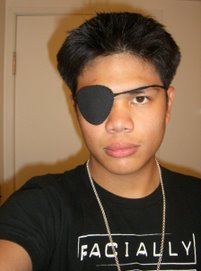
 People power ousted Estrada in the Philippines, and popular protests in China that the government has a hard time controlling how they are organized both share one thing in common: they were organized by text messaging on mobile phones.
People power ousted Estrada in the Philippines, and popular protests in China that the government has a hard time controlling how they are organized both share one thing in common: they were organized by text messaging on mobile phones.As of 2005, 27% of China were the owners of mobile phones, which allows for far more expression than e-mails that are censored or blocked by a regime that closely monitors its critics, who are usually viewed as synonymous with dissenters. As of 2006, the Philippines, a country with only 2 million Internet users and 3 million land phone users, had over 30 million mobile phone users, many of whom can multi-task anything they do while text messaging in one hand without even looking at the screen.
It is this extreme familiarity with the technology that helps people overcome the censorship of the news media, even in places like North Korea where some 20,000 mobile phones are smuggled in and used as a primary source of news about the outside world that the DPRK wants none of its citizens to be familiar with in order to protect its regime. Even the most outspoken blogger cannot compete with international text messaging when his or her blog is subject to being blocked or even shut down with heavy Internet censorship.
But development is not what causes people to resort to text messaging to spread information or organize protests: South Korea, which has over half of its population connected to high-speed Internet connections, still has an obvious divide between the people and the information. According to Cathy Hong of the online edition of Christian Science Monitor:
In South Korea, for example, many experts agree that current President Roh Moo Hyun would not have been elected without the help of the Internet and SMS. Back in December 2002, conservative mainstream media favored his rival Lee Hoi Chang to win the election, especially when a former rival who had endorsed Mr. Roh unexpectedly withdrew his support on the eve of Election Day. But Roh's core supporters, who were of the younger "information technology" generation, launched a massive last-minute campaign. They fired off e-mails and text messages to 800,000 voters on the morning of election day, urging them to go to the polls. Source: http://www.usatoday.com/tech/news/2005-06-30-politics-text-tool_x.htm?csp=34
So even with greater access to technology, text messaging is now in of itself a necessary tool for the spread of information, especially with technology like the Apple iPhone which grants Internet access for direct access to news articles online that are complementary to people who have configured their mobile phones to receive news via long or multiple text messages. The mobile phone is an important tool in Africa as it is the one piece of technology that links everyone together, especially when farmers in the rural countryside get actual prices from friends or relatives in the city via text messages so that they do not get cheated out of their earnings from the agents who come to pick up their goods to sell to the city and give their own daily prices.
The downside to people text messaging is the limitations on characters each text message. People do not necessarily utilize the dictionary tool, but their abbreviations sometimes habitually end up in written form, including people occasionally writing words such as "2gthr" under the strains of in-class writing assignments, such as in the Philippines.
Beyond text messaging, mobile phone technology has had its own fair share of scandals, from the Tammy Nyp scandal in Singapore of February 2006 when a student's phone was stolen and erotic movies of her and her boyfriend saved on the phone were sent to multiple people and even uploaded to the Internet, despite Singapore's strict controls and censorship. Furthermore, some debates are going on about having mobile phones with cameras being allowed in places such as locker rooms, and security measures need to be taken into consideration amidst the advent of mobile technology, as it is much easier to snap a photo or record a movie of classified information and send it long before being caught.
Not to totally dismiss the use of the video and camera function of mobile phones however is the video below uploaded to youtube of one of many instances in which students have taken video recordings of abuses by teachers. One case in Taiwan caused an uproar and debates on the subject of corporal punishment in Taiwan, available in BBC's archive at http://news.bbc.co.uk/2/hi/asia-pacific/4378412.stm.
Mobile phones have already penetrated popular culture as much as the Internet has, possibly even deeper considering their ease of use and wider user base. Movies such as Japanese horror film One Missed Call show creative interpretations of mobile phone use, such as its plot about a ring tone that plays and leaves a prophetic message of the listener's own voice and approaching death by supernatural means.
Perhaps in the near-future, there may be stricter controls over the content of mobile technology and capability as governments are wary of their people's creative use of the technology, especially when terrorists potentially use text messaging to organize or plan attacks. There is also the potential for governments to take a page from the Israeli government, who in 1996 planted a bomb in the mobile phone of Palestinian suicide bombing mastermind Yahya Ayyash which resulted in his assassination.
So in the age of information and misinformation, we see a new field that is still in its developmental stages in the form of mobile technology, especially having seen what its potential can already do. Just don't go expecting your phone to explode in your face
More articles about the text messaging phenomenon
http://www.usatoday.com/tech/news/2005-06-30-politics-text-tool_x.htm?csp=34
http://www.iht.com/articles/2005/04/25/news/internet.php
http://www.textually.org/textually/archives/2005/11/010591.htm
http://www.washingtonpost.com/wp-dyn/content/article/2006/08/24/AR2006082401379.html
http://technology.guardian.co.uk/online/story/0,3605,1176738,00.html
http://www.bulatlat.com/news/4-25/4-25-texters.html
http://www.time.com/time/asia/asiabuzz/2001/01/23/
http://www.smh.com.au/news/Technology/Mobile-rings-changes-for-worlds-poor/2005/04/21/1114028473872.html









